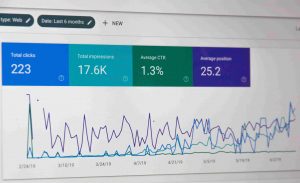Agile Glossary: The Complete List of Agile Terminology You Need To Succeed
A
Agile
Agile is a management approach designed to enhance organisations’ ability to navigate change with greater efficiency. Widely employed in project management and software development, Agile operates by dividing large projects into smaller, more manageable components. These smaller units, referred to as user stories, are then prioritised and delivered in short, focused periods known as iterations. Embracing an Agile methodology empowers organisations and teams to effectively handle dynamic and unpredictable project landscapes, enabling them to swiftly adapt to new or unexpected demands. Agile provides a natural roadmap for efficiently managing project plans, outcomes, and requirements, allowing for the incremental delivery of results.
Agile Iteration
In Agile, an iteration refers to a brief time frame lasting one to two weeks during which a team focuses on enhancing a particular process. Within software teams, these iterations revolve around converting client user stories into functional prototypes. Throughout these iterations, teams engage in analysis, design, testing, and coding processes, leading to the creation of tangible value for end-users while simultaneously tracking their progress. The iterative approach allows for continuous improvement as successive cycles contribute to the refinement of both the product and the underlying processes, ensuring the final deliverable aligns precisely with the end-user’s requirements.
Agile Manifesto
In 2001, the Agile Manifesto emerged as a groundbreaking philosophy championed by 17 software practitioners seeking a more viable alternative to cumbersome software development practices and repetitive documentation. This transformative manifesto advocates an approach that prioritises the significance of individuals, efficient change management, and meaningful user interactions over an excessive focus on exhaustive documentation, rigid processes, and extensive upfront planning. By embracing the principles of the Agile Manifesto, teams can foster a more dynamic and adaptable environment that empowers creativity and collaboration while streamlining the development process.
Agile Mindset
The Agile mindset encompasses a fusion of values, attitudes, practices, and individual work approaches geared towards effectively handling change in dynamic and unpredictable environments. Embracing this mindset, teams view failures as valuable learning experiences, openly share knowledge, and seamlessly collaborate to achieve common goals. When implementing Agile principles into project management and software development, having an Agile mindset proves immensely advantageous, as it fosters a culture of adaptability, continuous improvement, and collective synergy within the team.
Agile Software Development
Agile software development refers to a collection of practices, frameworks, and principles aligned with the values of the Agile Manifesto. When adopting an Agile approach, teams and organisations centre their software development processes around the individuals involved and their unique work styles. This approach encompasses a diverse array of methodologies and practices, including planning sessions, sprints, pair programming, test-driven development, Feature-Driven Development (FDD), and Scrum. By integrating these Agile practices, teams can foster collaboration, adaptability, and iterative progress, ultimately leading to more efficient and customer-focused software development.
Agile Transformation
Agile transformation involves revitalising an organisation and its workforce, enabling them to thrive in a collaborative, proactive, and dynamic environment. The goal of Agile transformation is to inject new vigour into the organisation through collaborative work practices, empowering employees, embracing diverse ideas, and prioritising the needs of end-users. By undertaking this transformation, organisations can foster a culture of adaptability and innovation, leading to improved performance and a stronger competitive edge in today’s ever-changing business landscape.
B
Backlog
In Agile, a backlog serves as a comprehensive to-do list, outlining the tasks that an Agile team must complete to accomplish a particular goal or objective. Arranged in order of priority, the backlog acts as a guide for product development teams, providing clarity on their next actionable items. The backlog encompasses a range of items, such as bug fixes, modifications to existing features, the introduction of new functionality, and various user stories. By maintaining a well-organised backlog, teams can effectively plan their work and ensure that they are consistently delivering value to their users.
Backlog Refinement
Backlog Refinement, previously known as Backlog Grooming, is a recurring practice where the product owner collaborates with some or all of the team members to fine-tune the backlog. The primary objectives of this process are to ensure that the backlog contains the necessary items, that they are appropriately prioritised, and that the items at the top of the backlog are well-prepared for delivery. By engaging in regular Backlog Refinement, Agile teams can maintain a well-organised and refined backlog, facilitating smooth and efficient progress throughout the development process.
Backlog Grooming
Backlog grooming involves the meticulous refinement of items within a backlog, ensuring their prioritisation and readiness for timely delivery. It is also referred to as backlog refinement or backlog management and can be conducted as an ongoing, consistent practice or scheduled as a dedicated meeting. During this process, various activities take place, such as creating new user stories, assigning appropriate estimates to stories, and carefully evaluating the priority of existing user stories. By engaging in effective backlog grooming, Agile teams can maintain a well-prepared and prioritised backlog, paving the way for smoother development and successful project outcomes.
Burndown Chart
The burndown chart is a visual depiction illustrating the progress of work completed and the remaining tasks within a sprint. It provides a concise and comprehensive overview of the team’s advancement during each iteration, enabling them to identify potential scope creeps and ensure adherence to the schedule. This chart serves as a valuable tool in Agile project management, aiding teams in staying on track and making informed decisions throughout the sprint.
Burnup Chart
In Agile projects, a burnup chart is a widely employed visual graph designed to monitor the team’s workload and track the project’s progress, ensuring it remains on course and within pre-defined schedules. This chart provides a clear and intuitive representation of completed work over time, giving valuable insights into the project’s trajectory and facilitating effective decision-making. By using a burnup chart, teams can proactively manage their efforts, maintain transparency, and deliver successful outcomes within the specified timeframes.
C
Cadence
In Agile, cadence refers to the rhythmic pattern of an Agile team’s development cycle. It plays a crucial role in maintaining a smooth flow of repetitive tasks, allowing developers to effectively manage the variable aspects of solution development. The duration of a particular release cycle or sprint is commonly referred to as the cadence. By adhering to a well-defined cadence, teams can establish a predictable and sustainable pace, which fosters efficient collaboration, timely deliveries, and successful project outcomes.
D
Definition of Ready
The “Definition of Ready” is a practical checklist comprising specific criteria that assess whether a team is prepared to commence work on a particular task. In essence, it serves as a green light, indicating that a task is well-prepared for initiation. For instance, the “Definition of Ready” is employed to evaluate whether a specific user story is adequately prepared to be included in a sprint. By adhering to this checklist, Agile teams can ensure that tasks are sufficiently refined, eliminating potential obstacles and fostering a smoother and more productive development process.
Disciplined Agile Delivery
Disciplined Agile Delivery (DAD) is an Agile framework designed to expedite the delivery of top-notch products by offering context-specific guidance. This hybrid approach places a strong emphasis on goal-driven methodologies and prioritises the importance of individuals within the development process. DAD amalgamates global Lean and Agile practices, drawing from various methodologies such as Agile modelling, Kanban, XP (Extreme Programming), Scrum, and Unified Process. By leveraging this versatile framework, organisations can tailor their development approach to suit their unique requirements, promoting efficiency, collaboration, and the delivery of high-quality results at an accelerated pace.
E
Epics
An epic represents a substantial body of work that is broken down into smaller tasks or user stories, all aligned with the end-user’s requirements. In the realms of DevOps and Agile, epics play a pivotal role in establishing a hierarchical structure for the work and effectively organising pending tasks. These epics, or collections of related user stories, share a common overarching goal and are categorised into themes, streamlining project management and enhancing the team’s ability to deliver value-driven results.
Estimation
Agile estimation involves making a rough assessment of the relative effort needed to complete a particular project task. Unlike traditional estimations measured in hours or minutes, Agile relies on story points as a unit of measurement. In Agile projects, conducting regular estimations is essential to ensure the precision and reliability of the efforts required for project planning, management, testing, implementation, and delivery. By using story points, Agile teams can achieve a more flexible and effective approach to estimating tasks, fostering improved decision-making and successful project execution.
Extreme Programming (XP)
Extreme Programming (XP) is an agile software development framework with a dual focus on generating higher quality software and enhancing the well-being of the development team. Among the various agile frameworks, XP stands out as the most explicit in its emphasis on adopting appropriate engineering practices for software development. By prioritising both software excellence and team satisfaction, XP fosters a culture of collaboration, continuous improvement, and customer-centricity, leading to the creation of exceptional software products and a more fulfilling development experience.
F
Feature Driven Development
Feature Driven Development (FDD) is an Agile methodology specifically geared towards achieving highly efficient software outcomes. Notably scalable, FDD adopts an incremental approach, ensuring steady progress throughout the development process. This methodology excels in organising software development by placing a strong emphasis on fulfilling end-users’ requirements. By following FDD principles, development teams can streamline their workflows, maintain a clear focus on delivering valuable features, and ultimately create software that best aligns with users’ needs.
G
Gantt Chart
A Gantt chart is a graphical representation that offers a comprehensive overview of the tasks to be accomplished and their scheduled completion times. Widely utilised for project planning, Gantt charts provide a top-level perspective of the remaining work in the project. This extensively recognised project management tool visualises each task as a bar, where the position and length of the bar signify the duration and dates for that specific task. By employing Gantt charts, project teams can efficiently track progress, identify dependencies, and effectively manage their project timelines, ensuring a smoother and more organised workflow.
I
Information Radiators
An information radiator serves as a visual depiction of crucial team data highlights and statistics. Strategically placed in a highly visible location, it effectively shares essential information with stakeholders, promoting individual and team accountability. This tool enables stakeholders to stay informed about key metrics, such as velocity, incident reports, and the count of automated tests, fostering transparency and facilitating data-driven decision-making. By employing information radiators, teams can enhance communication, keep stakeholders engaged, and maintain a focus on continuous improvement and performance.
K
Kanban
Kanban is a widely adopted workflow management method that enhances, organises, and streamlines project tasks. DevOps software development and Agile teams leverage Kanban to promote smoother and more efficient implementation, ensuring timely delivery of work. As a powerful visual representation tool, Kanban maximises team efficiency by enabling them to consistently prioritise and focus on essential tasks. By using Kanban, teams can achieve better project management, enhance collaboration, and achieve their goals more effectively, ultimately leading to improved project outcomes.
Kanban Board
The Kanban board is a visual work management tool that optimises the efficiency of Agile project management teams by reducing work-in-progress tasks. Employing a straightforward framework of cards and columns, Kanban boards facilitate swift visualisation of the workflow, enabling teams to efficiently allocate tasks to appropriate individuals and ensure project completion within established timelines. A typical Kanban board for an Agile software development team comprises columns such as “Ready,” “Coding,” “Approval,” “Backlog,” and “Testing,” streamlining the entire development process and enhancing collaboration among team members.
L
Lean
Lean is a widely embraced work management philosophy that revolves around optimising customer value and minimising resource waste. Drawing inspiration from Toyota’s successful practices, the Lean model empowers teams to enhance their focus, leading to swifter project deliveries. Serving as the bedrock for the Agile methodology, the Lean concept can be readily adapted and applied across various business domains. By adopting Lean principles, organisations can streamline their processes, drive efficiency, and consistently deliver greater value to their customers.
P
Planning Poker
Planning Poker is an effective project planning and estimation technique designed to aid Agile teams in comprehending the effort and time necessary to fulfil tasks listed in their product backlog. Also referred to as Scrum poker, this collaborative approach involves team members utilising poker-style cards to assign story points to each backlog task or user story based on their complexity and effort required for completion. The process operates on the principle of team consensus, encouraging open discussions and collective decision-making, ensuring a more accurate and shared understanding of the project’s scope and timeline.
R
Release Plan
An Agile release plan is a product management approach that involves planning staged releases of software. Unlike traditional software planning methods, a release plan enables Agile teams to maintain their focus on significant releases, which are further divided into multiple iterations or sprints. With the help of release plans, Agile teams can develop longer-term strategies, define crucial project milestones, and align product delivery with the expectations of end-users. This dynamic and iterative planning process allows teams to adapt to changing requirements and deliver valuable software in a more organised and customer-centric manner.
Retrospective
Retrospectives are a valuable work management practice employed by Agile teams to introspect on their work approach and continuously enhance their outcomes. Referred to as Sprint retrospectives or Agile retrospectives, this method is carried out at regular intervals, enabling teams to identify successful practices and areas for improvement in specific projects. By fostering a culture of reflexion and learning, retrospectives empower teams to make informed adjustments, fine-tune their processes, and optimise their performance, ultimately leading to more successful and efficient project deliveries.
S
Scaled Agile Framework
The Scaled Agile Framework (SAFe) is a comprehensive work management methodology designed to empower development teams in effectively addressing Agile-related challenges. As enterprises adopt Agile methodologies within their organisation, they turn to SAFe’s guidelines and practices to establish a well-defined structure for work roles and responsibilities. SAFe also facilitates the preservation of organisational values while promoting a seamless and efficient completion of work. By embracing SAFe, enterprises can effectively scale Agile practices, enhance collaboration, and achieve greater success in their projects and initiatives.
Scrum
Scrum is an invaluable process framework that enables Agile teams to organise their work with greater effectiveness. Highly prevalent in complex product and software development ventures, Scrum encompasses a set of tools, roles, and meetings that facilitate organisations in meeting dynamic business objectives and swiftly adapting to the ever-changing market landscape. By leveraging Scrum, teams can optimise their workflows, enhance collaboration, and efficiently deliver value-driven outcomes, making it a popular choice for successful project management in fast-paced and demanding environments.
Scrum Board
A Scrum board serves as a visual representation of all the work to be completed within a designated sprint, illustrating the progress across various stages of the workflow. Scrum boards can be either physical or virtual, but both prove valuable tools for Agile teams to gain a clear understanding of the project’s advancement during a specific sprint. Typically, a Scrum board comprises three columns: “To-Do,” “Doing,” and “Done,” each depicting the status of the tasks at different stages of completion. By employing a Scrum board, teams can effectively track their progress, identify potential bottlenecks, and ensure a smooth and organised workflow throughout the sprint.
Scrum Master
A Scrum Master fulfils the role of a facilitator, guiding the Agile development team to adhere to Agile principles and values established collaboratively before commencing the project. Beyond cultivating an environment conducive to Agile practices, the Scrum Master also enhances communication between the Scrum team and the organisation. They play a vital role in conducting various team meetings, including sprint retrospectives, planning sessions, and daily Scrum stand-ups. By actively engaging in these responsibilities, the Scrum Master fosters effective collaboration, empowers the team to thrive, and ensures the seamless implementation of Agile methodologies throughout the project lifecycle.
Scrum Meeting
Scrum meetings encompass a range of diverse gatherings held by a Scrum team at regular intervals to effectively manage their software or product development. These meetings consist of the daily Scrum or daily stand-up, sprint reviews, sprint planning, and retrospective sessions. Each meeting serves a specific purpose in the Agile development process, fostering collaboration, communication, and continuous improvement. By conducting these Scrum meetings, teams can streamline their workflow, identify potential challenges, and make informed decisions to ensure successful project outcomes.
Scrumban
Scrumban is a cutting-edge Agile development approach that combines the structured aspects of Scrum with the process improvement features of Kanban. This hybrid methodology allows Agile teams to smoothly transition from Scrum to Kanban, harnessing the best of both worlds. By adopting Scrumban, teams can minimise resource wastage, optimise their processes, and achieve higher efficiencies in their development workflows. This flexible approach enables teams to tailor their work management to suit their specific needs, promoting continuous improvement and successful project deliveries.
Sprint
A Sprint refers to a predefined time frame during which Scrum teams work towards accomplishing specific objectives and advancing towards their targeted goals as scheduled. Sprints facilitate the seamless transformation of ideas into value for end-users, incorporating essential elements such as daily scrums, sprint planning, sprint reviews, and retrospectives. These components form an integral part of every Agile Scrum team’s workflow, ensuring effective collaboration, continuous improvement, and the timely delivery of valuable outcomes. Through Sprints, teams can maintain focus, enhance productivity, and steadily progress towards achieving their project milestones.
Story Points
Story points serve as straightforward measuring units utilised in Agile project development to gauge the difficulty of implementing a specific user story. Essentially, a story point represents the level of complexity associated with a particular story. Before assigning story points, various parameters are taken into consideration, including the amount of work involved, the complexity of the task, and the potential risks that may be encountered. By using story points, Agile teams can achieve a more accurate and collaborative approach to estimating effort, enabling better planning, prioritisation, and project management.
Story Splitting
Story Splitting is a valuable workflow enhancement technique used to organise user stories for implementation in upcoming iterations. This process involves breaking down larger user stories into smaller, more manageable ones, allowing for their efficient completion within a single iteration. Despite being divided, the essence and unique business value of the original user story are preserved, ensuring that the final deliverables remain meaningful and aligned with customer requirements. By employing story splitting, Agile teams can optimise their development process, promote incremental progress, and achieve a higher level of customer satisfaction through regular, valuable deliveries.
T
Timeboxing
Timeboxing is a time and energy management technique within Scrum that involves allocating a predetermined period to complete a specific task. This predefined time for the activity is referred to as a time box. By implementing timeboxing, Agile Scrum teams can effectively define, organise, and manage their work, leading to improved performance and productivity. This approach ensures that tasks are well-contained within designated timeframes, fostering a sense of urgency, focus, and disciplined execution. With timeboxing in place, teams can maintain a steady pace of progress, enhance collaboration, and consistently deliver valuable outcomes within the defined timelines.
U
User Story Mapping
User story mapping is a collaborative and graphical exercise utilised by Agile product teams to craft a comprehensive and user-centric experience. This top-down approach involves breaking down the overall product vision into smaller, actionable steps and arranging them in order of priority. By conducting user story mapping exercises, Agile teams gain a deeper understanding of their end-users, enabling them to develop products that closely align with their needs and preferences. This process fosters effective communication, better planning, and more informed decision-making, ultimately leading to the creation of successful and user-friendly products.
V
Velocity
Velocity refers to the amount of work that an Agile team can successfully complete within a specific time frame, such as a sprint or a release. Also known as throughput, velocity is quantified by Agile teams using various metrics, including story points, user stories, or engineer hours. This essential performance indicator allows teams to gauge their productivity and forecast their capabilities for future iterations or projects. By tracking velocity, Agile teams can better plan their workloads, set achievable goals, and continually improve their efficiency in delivering valuable outcomes.
Overview
If you’ve enjoyed this post, we’d recommend diving into the following other posts in this Agile series:
- An Introduction to The Agile Methodology
- Themes, Epics and User Stories – The Core Components Of Agile
- Embracing Agile Team Dynamics
- What is SAFe Agile and Why Should I Use It?
- What is Waterfall Development?
- What is Lean Development?
- What is Scrum?
- A Deep Dive Into Epics
- Exploring The Power of User Stories
- How Can I Use Personas?
- Decoding Agile Estimation (Story Pointing)
- Agile Transformation: How Can My Business Start Using Agile?
- The Spotify Approach To Agile Development
- What Is Agile Portfolio Management?
- Agile Glossary
- Agile Statistics







